#2N3904
Explore tagged Tumblr posts
Text
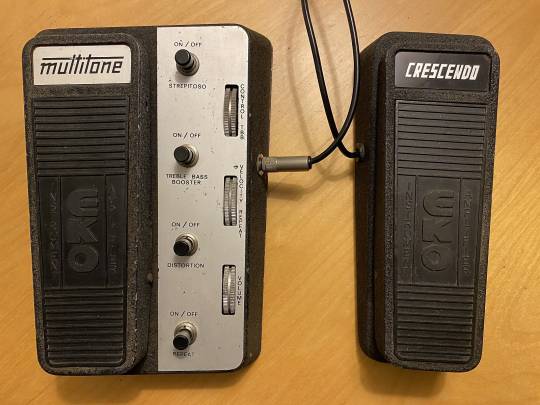

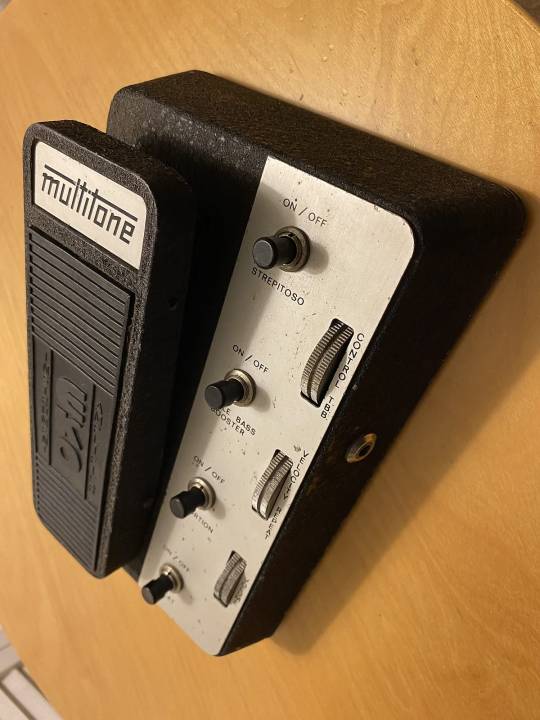
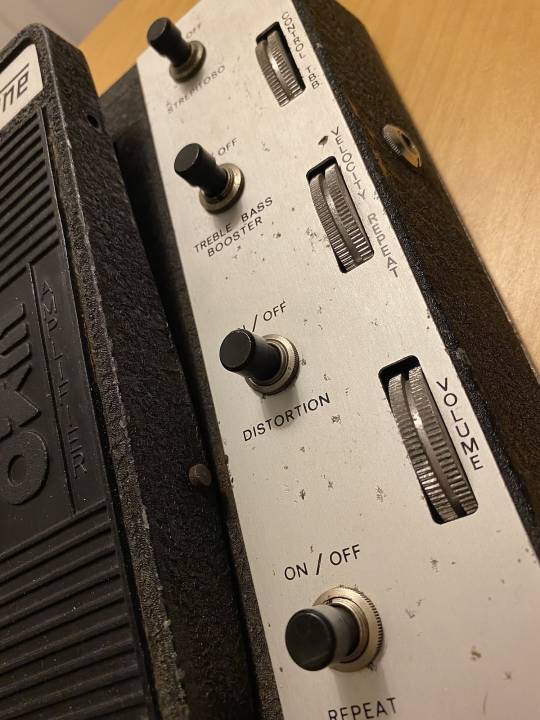
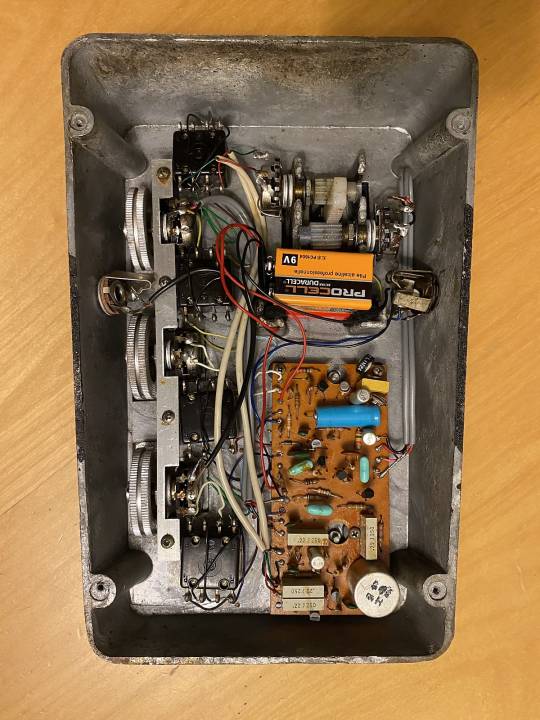
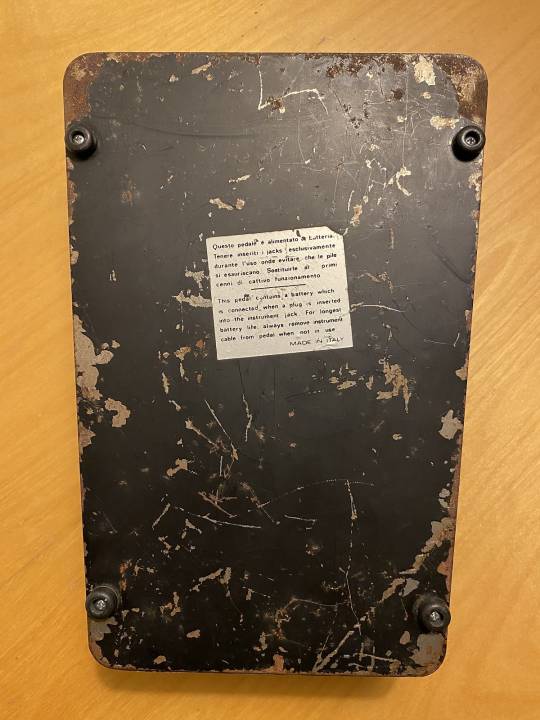
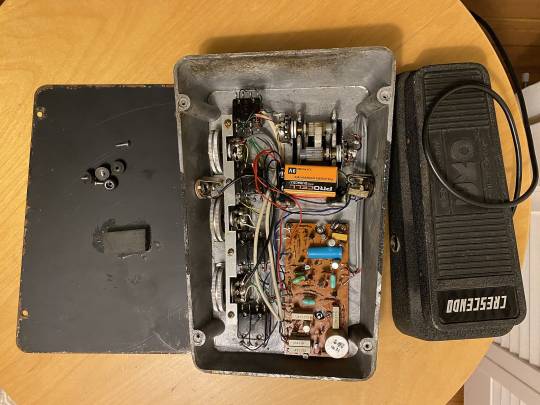
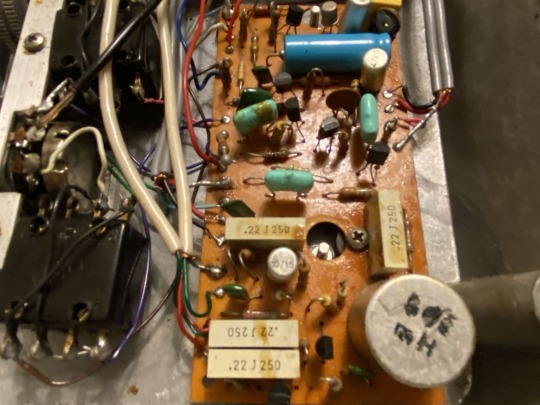
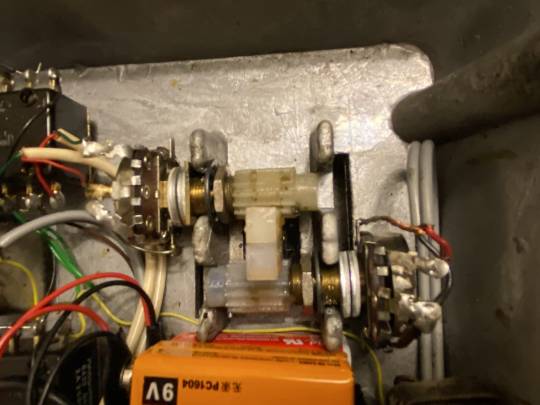
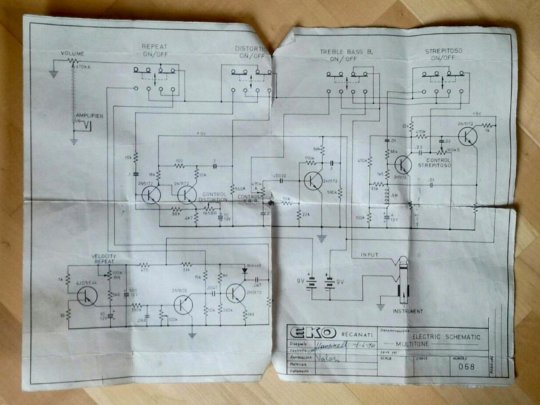



EKO - Multitone + EKO Crescendo volume pedal
Strepitoso: Wah Wah Treble/Bass Booster: Tone Shaper Distortion: '60s Sounding Fuzz Repeat Percussion: Unique Sounding Tremolo
"
Apparently it's the firt multi-effect ever. It has Wah (called Strepitoso in italian), Treble/Bass Booster, Distortion and Repeat (percussion tremolo). So I traced the 4 different circuits, you can find attached the schematics and some pics. FS33805 are npn BJT with 1:C 2:B 3:E pinout. I tested one and hfe was 216. BC208 is apparently an equivalent and if i'm not mistaken 2n3904 could do the job. 4JD5E44 is a UJT (maybe equivalent to 2n2646 ?)"
cred: reverb.com/The Isolation Booth Studio, freestompboxes.org/Nocentelli, Bononoob,
#EKO#multitone#crescendo#fuzz wah#volume pedal#combo pedal#expression#multi-effects-pedal#made in italy#roller pedal
29 notes
·
View notes
Text
Circuito con LDR
Materiales:
Led
Resistencia 10KΩ (1)
Resistencia 330Ω (1)
LDR (1)
Transistor 2N3904
Protoboard
Desarrollo:
Primero desde el positivo del protoboard conectamos una resistencia de 330Ω al positivo del Led (Azul), el cual conecta el negativo de esto a colector del transistor mientras que en la base de este conectamos una resistencia de 10 KΩ al positivo del protoboard junto al LDR que se conecta en cambio al negativo del protoboard.
Finalmente conectamos un puente desde el colector del transistor al negativo del protoboard.

Lo que este circuito hace es variar su intensidad por medio del LDR que a mas luz menos intensidad mientras que a menos luz más intensidad.
Video:
youtube
1 note
·
View note
Text
Introduction to the 2N3904 Transistor
Introduction to the 2N3904 Transistor
The 2N3904 is a widely used NPN bipolar junction transistor (BJT), typically employed for low-power amplification and switching applications. It’s part of the 2N3900 series and is known for its reliability and versatility. The transistor can handle voltages up to 40V and currents up to 200mA, making it suitable for a range of low-power electronics. Its small size and low cost contribute to its widespread use in various circuits, such as signal amplification, audio devices, and logic circuits.
Key Features of the 2N3904 Transistor
The 2N3904 transistor is characterized by a moderate current gain (hFE), typically between 100 to 300. It has a maximum collector-emitter voltage of 40V and a maximum collector current of 200mA. With a transition frequency of 250MHz, it offers efficient switching and amplification at higher frequencies. Its compact TO-92 package ensures easy integration into circuits. These features make it ideal for general-purpose applications, from small signal amplification to switching tasks.
Applications of the 2N3904 Transistor
The 2N3904 is widely utilized in signal processing applications, including audio amplification and low-frequency oscillators. It’s commonly found in electronic devices like radios, audio amplifiers, and switching circuits. In digital circuits, the 2N3904 is often used for logic level switching, signal conditioning, and timing circuits. Its small size and versatility allow it to be used in various consumer electronics, automation systems, and hobbyist projects, where moderate power handling and reliability are needed.
How the 2N3904 Transistor Works
As an NPN transistor, the 2N3904 operates by allowing current to flow from the collector to the emitter when a small current is applied to the base. This small current acts as a switch, controlling the larger current between the collector and emitter. When the base-emitter junction is forward biased (positive base), the transistor turns "on," allowing current to pass through the collector-emitter path. When the base-emitter junction is reverse biased (negative base), the transistor is "off," blocking current flow.
Advantages and Limitations of the 2N3904 Transistor
The 2N3904 is popular for its cost-effectiveness, compact size, and ease of use in low-power circuits. It offers good performance in many applications, especially in audio and signal processing. However, its current handling capacity is limited to 200mA, making it unsuitable for high-power applications. Additionally, its voltage and current limitations can restrict its use in more demanding systems. Despite these limitations, its widespread availability and versatility in low-power applications make it a go-to choice for many electronics enthusiasts and engineers.
0 notes
Text
Efficiency of 2N3904S-RTK/PS: What You Need to Know
When it comes to choosing the right transistor for your electronic projects, efficiency is often a key consideration. The 2N3904S-RTK/PS is a popular NPN transistor known for its reliability and performance. In this article, we will explore what makes the 2N3904S-RTK/PS efficient, its features, applications, and why it might be the right choice for your needs.
Introduction
Are you looking for a transistor that combines efficiency with reliability? The 2N3904S-RTK/PS might just be what you need. This transistor is widely used in various electronic applications due to its excellent performance and efficiency. Let's dive into what makes the 2N3904S-RTK/PS stand out and how it can benefit your projects.
Understanding the 2N3904S-RTK/PS
The 2N3904S-RTK/PS is a silicon NPN transistor designed for general-purpose switching and amplification. It is part of the 2N3904 series, which has been a staple in the electronics industry for many years. This particular model, the RTK/PS variant, offers enhanced features that contribute to its efficiency and versatility.
Key Features of the 2N3904S-RTK/PS
Several features make the 2N3904S-RTK/PS a preferred choice:
Low Power Consumption: Designed to operate efficiently with minimal power loss.
High Switching Speed: Capable of switching at high speeds, making it suitable for various applications.
Robust Construction: Built to withstand harsh conditions and maintain performance.
Compact Size: Its small footprint allows for easy integration into various circuits.
Technical Specifications
Understanding the technical specifications of the 2N3904S-RTK/PS is crucial for appreciating its capabilities:
Maximum Collector-Emitter Voltage (Vce): 40V
Maximum Collector Current (Ic): 200mA
Maximum Power Dissipation (Pd): 625mW
Transition Frequency (ft): 300 MHz
DC Current Gain (hFE): 100 to 300
These specifications highlight the transistor's ability to handle various demands while maintaining efficiency.
Efficiency Factors
What makes the 2N3904S-RTK/PS efficient? Let's break it down:
Low Saturation Voltage: This reduces power loss when the transistor is in the "on" state.
High Gain: With a high current gain, the transistor can amplify signals more efficiently, requiring less input power.
Thermal Stability: The transistor maintains performance across a wide temperature range, reducing the risk of thermal runaway and ensuring consistent efficiency.
Applications of the 2N3904S-RTK/PS
The versatility of the 2N3904S-RTK/PS means it can be used in various applications:
Switching Circuits: Ideal for switching low to moderate power loads in various electronic devices.
Amplification: Used in audio and signal amplification circuits due to its high gain and low noise.
Oscillators and Timers: Suitable for generating precise frequency signals in oscillators and timers.
General-Purpose Circuits: Perfect for use in a wide range of general-purpose electronic circuits, including sensors, drivers, and more.
Comparison with Other Transistors
How does the 2N3904S-RTK/PS stack up against other transistors? Here’s a quick comparison:
BC547: While the BC547 is also a popular choice for general-purpose applications, the 2N3904S-RTK/PS offers higher current handling and better switching speed.
2N2222: The 2N2222 is known for its robustness, but the 2N3904S-RTK/PS provides similar performance with lower power consumption, making it more efficient in some applications.
S8050: The S8050 is a good alternative for low-power applications, but the 2N3904S-RTK/PS has a higher transition frequency, offering better performance in high-frequency circuits.
User Experiences and Reviews
Users of the 2N3904S-RTK/PS often praise its reliability and efficiency. Many appreciate its consistent performance in both hobbyist projects and professional applications. Reviews frequently highlight its ease of use, robust construction, and excellent value for money.
Installation Tips
Integrating the 2N3904S-RTK/PS into your circuit is straightforward, but here are a few tips to ensure optimal performance:
Proper Soldering: Use a fine-tip soldering iron and quality solder to make clean, reliable connections.
Heat Management: Ensure adequate heat dissipation by using heat sinks if necessary and avoiding excessive current flow.
Correct Orientation: Pay attention to the pin configuration (collector, base, emitter) to avoid incorrect installation.
Maintenance and Longevity
To maintain the performance and longevity of the 2N3904S-RTK/PS:
Avoid Overloading: Do not exceed the maximum voltage and current ratings to prevent damage.
Regular Inspection: Periodically check for signs of wear or damage, especially in demanding applications.
Proper Storage: Store in a dry, static-free environment to prevent corrosion and static discharge damage.
Future Trends in Transistor Technology
The future of transistor technology is exciting, with several trends likely to influence the use of components like the 2N3904S-RTK/PS:
Miniaturization: Ongoing advancements in manufacturing techniques are leading to smaller and more efficient transistors.
Increased Efficiency: Future transistors are expected to offer even lower power consumption and higher performance.
Integration with Smart Technologies: As smart devices become more prevalent, transistors will need to integrate seamlessly with advanced technologies, providing better control and functionality.
Conclusion
The 2N3904S-RTK/PS is a versatile and efficient NPN transistor that stands out in the world of electronic components. Its low power consumption, high switching speed, and robust construction make it an excellent choice for a wide range of applications. Whether you're a hobbyist or a professional, understanding the efficiency and benefits of the 2N3904S-RTK/PS can help you make informed decisions and achieve superior performance in your projects.
0 notes
Text
Simple Electronics Projects for Engineering Students
Are you a Final year student? Looking for “Simple electronic projects”? Then I have a Suggestion for you, Takeoff Edu Group provide number of project for Final year Students. Here we furnish a best Ideas and innovative projects for all Kind of Students (like Beginners to Advanced) based on their needs.
As an Engineering Students, You have to work on Simple Electronic projects on your Academic year.
Here are a few Takeoff Edu Group Title of simple electronic projects

Trendy Projects:
Virtex 7 FPGA Implementation of 256 Bit Key AES Algorithm with Key Schedule and Sub Bytes Block Optimization.
A Low-Power Low-Cost Design of Primary Synchronization Signal Detection.
Approximate Belief Propagation Decoder for Polar Codes.
Unequal Error Protection Code Derived from Orthogonal Latin Square Code.
Design and Implementation of a Hybrid Switching Router for the Reconfigurable Network-On-Chip.
Standard Projects
The Mesochronous Dual-Clock FIFO Buffer.
A Double Error Correction Code for 32-bit Data Words with Efficient Decoding.
Security Enhancement of Information using Multi-layered Cryptographic Algorithm.
Fast Mapping and Updating Algorithms for a Binary CAM on FPGA.
Security Enhancement of Information using Multi-layered Cryptographic Algorithm.
LED Blinking Circuit:
Components: LED, Resistor (220 ohms), Breadboard, Jumper wires.
Connect the LED and resistor in series and then connect them to the power source. The LED should blink on and off.
Buzzer Circuit:
Components: Buzzer, Resistor (1k ohm), Transistor (NPN, e.g., 2N3904), Breadboard, Jumper wires.
Connect the buzzer, resistor, and transistor in a circuit. Apply power, and the buzzer should produce sound.
Light-Activated Switch:
Components: LDR (Light Dependent Resistor), Resistor (10k ohms), Transistor (NPN), LED, Breadboard, Jumper wires.
Connect the components such that the LED turns on when light falls on the LDR.
Temperature Sensor with LM35:
Components: LM35 temperature sensor, Resistor (1k ohm), LCD display, Breadboard, Jumper wires.
Connect the LM35 to the LCD display to measure and display the temperature.
Simple Audio Amplifier:
Components: LM386 IC, Capacitor (10uF), Capacitor (0.1uF), Resistor (10k ohms), Speaker, Breadboard, Jumper wires.
Connect the components to create a basic audio amplifier circuit.
The above-mentioned Article are only the example of “Simple electronic projects”?, Here Takeoff Edu Group provide All kind of Academic projects with best project knowledge and support to Student necessities.
Why are you waiting for join and let’s start your Electronic Project today with Takeoff Edu Group.
0 notes
Text
Simple Water Level Indicator with a Buzzer - Ktronics
To make a straightforward water level marker with a ringer, you'll require a couple of essential electronic parts. A step-by-step guide to building one is provided below: Parts you'll require:
Water tank/container
Four or more water level sensors (can be metal probes or conductive strips)
Buzzer
NPN transistor (e.g., 2N3904)
Resistors (220Ω, 10kΩ)
Diode (1N4001 or similar)
Breadboard or PCB (for prototyping)
Connecting wire
A simple water level indicator with a buzzer can be used in various applications where monitoring water levels is important. Some examples of its applications include: Overhead water tank: Install the water level indicator in an overhead tank to determine the water level. The buzzer can be programmed to sound an alarm when the tank is nearing empty, indicating the need for refilling. Simple Water Level Indicator with a Buzzer
Underground water tank: Similarly, the indicator can be used in an underground water tank to monitor the water level. The buzzer can be set to sound when the tank is almost full, preventing overflow and wastage of water. Sump pump system: In a basement or any area prone to flooding, the water level indicator can be connected to a sump pump system. The buzzer can alert you when the water level rises above a safe threshold, prompting you to activate the pump and prevent flooding. Irrigation systems: When using an irrigation system, you can integrate the water level indicator into the water storage tank or reservoir. The buzzer can be programmed to sound when the water level becomes critically low, signaling the need to refill the reservoir or adjust the irrigation schedule. Simple Water Level Indicator with a Buzzer
Rainwater harvesting systems: Water level indicators with buzzers can be used in rainwater harvesting systems to monitor the level of collected rainwater. The buzzer can alert you when the storage tank is nearing capacity, ensuring proper utilization and preventing overflow.
Industrial applications: Water level indicators can be utilized in industrial settings, such as boiler systems or cooling towers. By integrating a buzzer, operators can be alerted to low water levels, preventing equipment damage and ensuring efficient operation.
Remember, these are just a few examples of the potential applications for a simple water level indicator with a buzzer. The specific use will depend on the requirements and context of your project or situation.
#Doubletankcontrollerinchennai#Doublemotorcontrollerinchennai#Doublemotordoubletankcontrollerinchennai#Triplemotorcontrollerinchennai#Gsmbasedwirelesscontrollerinchennai
0 notes
Text

Electra with mods.
3 notes
·
View notes
Photo

#2N3904#ONSEMI#TO92(Khross electronics co.크로스전자에서) https://www.instagram.com/p/ClkWDlXJk4a/?igshid=NGJjMDIxMWI=
0 notes
Text
Expérimentation et modifications de la Bazz Fuss
Expérimentation et modifications de la Bazz Fuss

Dans cet article théorico-pratique, nous allons voir le circuit d’une fuzz très facile à monter : la Bazz Fuss, que j’ai découvert sur le site home-wrecker.com. Cette pédale, conçue par Christian Hemmo a été initialement pensée pour une guitare basse, mais elle fonctionne très bien pour la guitare, comme le témoignent les vidéos que l’on peut trouver sur internet.
Sur la toile on trouvera…
View On WordPress
0 notes
Text

It would be a thing of beauty if I could get these in the datasheets, y'know where data is supposed to be
Sleep deprived today gentlemen, and very irritated that most of the transistor datasheets I've been looking at don't have collector curves in their literature. I want a nice graph so I don't have to calculate everything or build a fucking curve tracer and have to convince Texas Instruments to send me samples.
#this is just a generic one btw or maybe a 2N3904 idk i got it off image search not a real datasheet
1 note
·
View note
Photo



Collector Effectors - Moon Wolf
one-off with a custom psychedelic dot finish
“Hammond 1590j enclosure, wired on hand cut and painted Vero board we have Panasonic and Sprague caps, KOA Speer resistors, 2N3904, 2SC945 and 2N3704 transistors, 1N1418 diodes and a transformer!!!
The Moon Wolf is my take on the GS Wyllie Moonrock! It can do nasty reverse envelope fuzz sounds up to octave and well into splatty ring mod alien lullabies. It is super interactive with your guitars pickups and controls and cleans up greatl!”
s.more about G.S.Wyllie
cred: facebook/Pat Brown
31 notes
·
View notes
Text
2N3904 TO-92 Транзистор биполярный NPN 40В 0.2А 0.35Вт
2N3904 TO-92 Транзистор биполярный NPN 40В 0.2А 0.35Вт
Биполярный транзистор 2N3904, его характеристики говорят о том что чаще всего используется в телевидение и бытовой электронике в качестве выключателя малой нагрузки. Также его можно использовать в виде простого усилителя или стабилизатора, в зависимости от схемы включения. Цоколевка транзистора 2N3904 Комплементарной парой транзистора 2N3904 является транзистор 2N3906 c p-n-p…

View On WordPress
1 note
·
View note
Text
Circuito impreso para Anemómetro o medidor de la velocidad del viento, wind meter
Circuito impreso para Anemómetro o medidor de la velocidad del viento, wind meter
Acá les ofrecemos el circuito impreso para el Anemómetro o medidor de la velocidad del viento, también conocido como anemógrafo; utilizado para ayudar en la predicción del clima. También es uno de los instrumentos básicos en el vuelo de aeronaves más pesadas que el aire.
NOTA: Como siempre, les recomendamos que antes de proceder a plasmar el diseño en la placa de circuito impreso virgen,…
View On WordPress
0 notes
Text
Мой керамический паяльник - паяльная станция своими руками.
Паяльник нужен был, собирал станцию из того что было под рукой.

Видео https://youtu.be/xJ_rsg16pKc
Самодельная паяльная станция, для паяльника SOLDERING SL-I 24V 48W, прилагаются компоненты цельной схемы; Компаратор выполнен на микросхеме CD4011BE и двух транзисторов 2n3904; Операционный усилитель на аудио усилителе lm386 - доведенный до состояния усиления больше чем в 350 раз(по даташиту 250 макс), нужен для того чтобы усилить сигнал с паяльника величина которого всего 10миливольт. Силовой ключ mosfet irf510, управляется драйвером из двух комплементарных транзисторов 2n3904 и 2n3906, Ключ irf510 обладает замечательными свойствами держит ток до 4А напряжением до 100вольт при этом затвор всего 300пф, Потенцеометр которым можно регулировать температуру много оборотный подстрочник на 10к, Внутренний регулятор напряжения на LM317lz настроен на 9v. Фото схемы в большом разрешении https://cloud.mail.ru/public/CRLG/oPd...
Паяльник называется "SOLDERING SL-I 24 V48w" работает от 24 вольт при этом потребляя 2 ампера тока. Но паяльник может работать и от 12в потребляя 1А, греется дольше. Но паять тоже можно, не большие DIP формата детали - не толстые провода, иначе быстро теряет температуру. В штатном же режиме мощный прибор! Схема спаяна на макетной плате коричневой китайской формата 5х7см. Ключ irf510 без радиатора не греется. Корпус из полипропеленовой потолочной плитки, клей обычный термопистолет. Схема также доработана зашитой от неправильной паляризации (от дурака). Ручка на много оборотный потенцеометр сделана из провода от компьютерного блока питания "Мама", я заметил что ручки очень хорошо делаются. Потенцеометр 3296 живут долго несмотря что стоит копейки, и считается подстроечным.
Дорогой Читатель если нужна схема полная на агрегат или что то не понятно пиши в коментах здесь или на ютубе, как только увижу что кому то интересно обязательно дополню материал. Подписывайтесь в ютубе и ставте лайк, Это будет лучшей для мня благ��дарностью https://youtu.be/xJ_rsg16pKc
0 notes